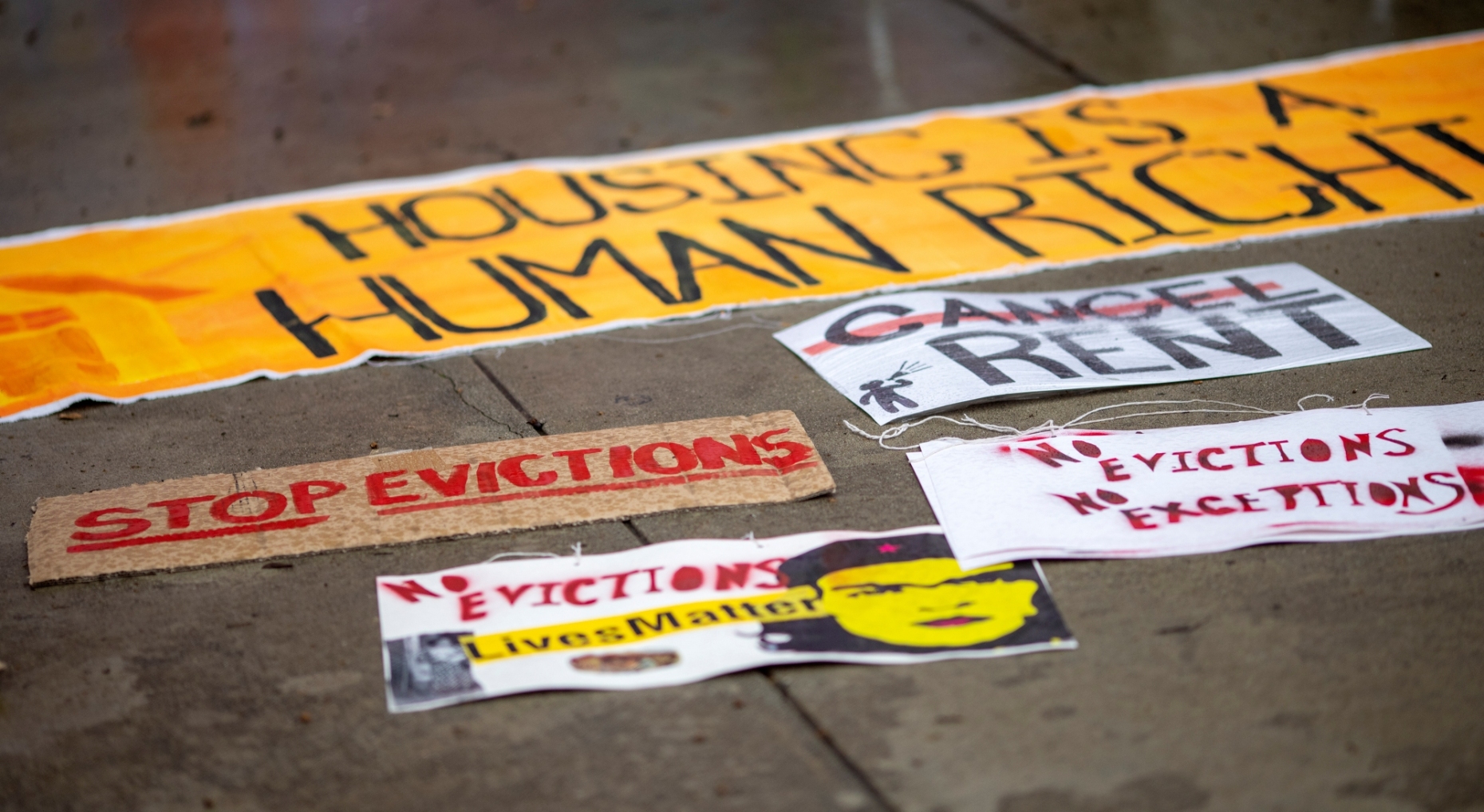California’s eviction ban is ending. What’s next for landlords, tenants?

Is the Bay Area headed for an eviction tsunami or a drizzle? A rush to courthouses or to rental aid programs? A mass displacement of renters or a slow return to the status quo?
California’s eviction moratorium expires Sept. 30, clearing the way for landlords to start removing tenants for failing to pay rent during the pandemic. About 7% of California tenants are behind on rent, accounting for an estimated $3.5 billion in debt, according to an analysis released in August by the Federal Reserve Bank of Philadelphia. And unemployment is still higher than it was before COVID.
But removing a tenant during the still-volatile and evolving pandemic will be much more complicated, costly and time-consuming than in pre-COVID times. Landlords will regain rights to kick out tenants for nonpayment, but renters can also avail themselves of limited protections through March by applying for rent relief from the state.
Advocacy agencies, state housing officials and nonprofit social agencies have been bracing for numerous requests for aid and for help navigating the renter-landlord relationship under new state law.
Why did the state impose a moratorium?
Public health experts reasoned early in the pandemic that keeping people in stable housing would slow the spread of the deadly virus. Gov. Gavin Newsom announced an emergency shelter-in-place declaration on March 19, 2020. Emergency measures curbed displacement and homelessness in the early days of the pandemic and offered leniency for renters as unemployment soared and the economy faltered. And an eviction ban continued in various forms — including a California Supreme Court-sanctioned halt on certain eviction hearings in state courts and two legislative extensions before ending this month.
What changes for landlords?
Landlords have been allowed to remove tenants during the pandemic in certain, limited circumstances: for egregiously bad behavior, health and safety concerns, or if they have plans to sell the property or have a family member move in. Nonpayment could not be grounds for eviction if a tenant gave sworn notice she was impacted by COVID.
Beginning Oct. 1, property owners will be able to file for eviction because a tenant owes rent from the past year. Landlords must show they have applied to state or local rental assistance programs for the tenant, and have either been denied (possibly because the tenant made too much money to qualify for aid) or that the tenant had not filled out their part of the relief application.
If a tenant has paid at least 25% of pandemic-owed rent by Sept. 30, he or she is generally protected from eviction. But missed rent next month can be treated similar to pre-pandemic delinquency and increase a renter’s risk of displacement.
What changes for tenants?
Tenants may again face 3-day notices beginning with missed October rent, giving them a tight deadline to pay up or have the court process begin in earnest. But families have a powerful weapon to head off displacement — apply for rental assistance through the state, at Housing is Key, or through various local programs found in San Jose, Oakland, San Francisco and Fremont.
A tenant can show a landlord that she has applied for aid and pause the legal action. If a tenant’s aid application has been denied, the lawyers can move ahead. By state law, a tenant cannot be evicted for debt accrued between March and August 2020, although landlords can sue in small claims court to recover the money.
An approved aid application will stop an eviction for nonpayment, said Jane Wong, housing attorney with the Law Foundation of Silicon Valley. “Our strongest recommendation is that they apply,” she said.
Will there be a sudden surge in evictions and homelessness?
Attorneys representing tenants and landlords doubt property owners will rush to courthouses and file eviction cases. The legal process is more complicated than pre-COVID rules, and likely a burden most landlords will not want to shoulder on their own. The California Apartment Association recommends its members hire an attorney to navigate the process. Tenant advocates also recommend legal counsel.
Debra Carlton of the CAA said most landlords simply want to be paid the back rent. “I don’t think there’s going to be an eviction tsunami.”
Will the Emergency Rental Assistance Program help head off displacements?
The $5.2 billion California relief program, funded by the federal government, was designed to preserve housing for tenants and help landlords pay their mortgages, property taxes and other expenses. California has allocated an additional $2 billion to cover unpaid utilities. Newsom also boosted rental reimbursement from 80% to 100% for landlords.
In theory, the flood of public money into the rental market should help renters settle their debts and keep their apartments. But the program has been marred by a complex application process, a myriad of local programs with different eligibility requirements, and confusion and hesitation from both landlords and tenants.
The state has distributed $584 million to landlords and tenants out of $2.6 billion requested from the state fund as of late September. Local programs, like those in San Jose, Oakland, Fremont and San Francisco, are not included in the tally.
The CAA is urging cities and counties to turn over administration of local aid programs to the state. San Jose, San Francisco and Los Angeles have recently handed off their responsibilities.
Housing officials on all sides acknowledge the process of settling back debts, preventing evictions and getting aid to landlords is complex and can vary from city to city. Landlords are encouraged to hire lawyers, and struggling tenants should seek help from local nonprofits and social agencies for specific help.

